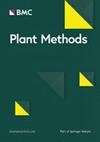利用图像分析的集合深度学习模型方法,用于人工智能智能农业中的棉花作物分类
IF 4.7
2区 生物学
Q1 BIOCHEMICAL RESEARCH METHODS
引用次数: 0
摘要
农业是任何国家最重要的资产之一,因为它通过缓解贫困、粮食短缺、失业和经济不稳定带来繁荣。农业的整个过程由许多部门组成,如作物栽培、水利灌溉、供应链等。在种植过程中,植物会面临许多挑战,其中农药侵害和植物病害是主要威胁。病害影响产量,进而影响国家经济。在过去的十年中,农业取得了长足的进步,但仍有相当一部分作物的产量受到病虫害的影响。早期检测和预防是成功管理农作物的关键。为此,我们提出了一个框架,利用最先进的计算机视觉(CV)和人工智能(AI)技术,特别是深度学习(DL),来检测健康和不健康的棉花植株。我们的方法将深度学习与连续小波变换(CWT)和快速傅立叶变换(FFT)等特征提取方法相结合。检测过程中使用了预先训练好的模型,如 AlexNet、GoogLeNet、InceptionV3 和 VGG-19。根据准确率、精确度、召回率、F1 分数和混淆矩阵等指标分析了所实施模型的性能。此外,所提出的框架还采用了集合学习框架,利用平均法融合单个 DL 模型的分类得分,从而提高了整体分类准确率。在训练过程中,与从 FFT 提取的特征相比,从 CWT 提取的特征作为 DL 模型的输入时,该框架取得了更好的性能。在学习模型中,与 FFT 提取的特征相比,当使用 CWT 提取的特征进行训练时,GoogleNet 获得了 93.4% 的显著准确率和 0.953 的 F1 分数。紧随其后的是 AlexNet 和 InceptionV3,准确率分别为 93.4% 和 91.8%。为了进一步提高分类准确率,与 FFT 提取的特征相比,集合学习框架在 CWT 提取的特征上达到了 98.4%。结果表明,通过使用 DL 模型,从扫描图中提取的特征能更准确地检测出植物的各种状况,从而有助于早期检测棉花植株的病害。早期检测可提高产量和利润,从而对经济产生积极影响。本文章由计算机程序翻译,如有差异,请以英文原文为准。
An ensemble deep learning models approach using image analysis for cotton crop classification in AI-enabled smart agriculture
Agriculture is one of the most crucial assets of any country, as it brings prosperity by alleviating poverty, food shortages, unemployment, and economic instability. The entire process of agriculture comprises many sectors, such as crop cultivation, water irrigation, the supply chain, and many more. During the cultivation process, the plant is exposed to many challenges, among which pesticide attacks and disease in the plant are the main threats. Diseases affect yield production, which affects the country’s economy. Over the past decade, there have been significant advancements in agriculture; nevertheless, a substantial portion of crop yields continues to be compromised by diseases and pests. Early detection and prevention are crucial for successful crop management. To address this, we propose a framework that utilizes state-of-the-art computer vision (CV) and artificial intelligence (AI) techniques, specifically deep learning (DL), for detecting healthy and unhealthy cotton plants. Our approach combines DL with feature extraction methods such as continuous wavelet transform (CWT) and fast Fourier transform (FFT). The detection process involved employing pre-trained models such as AlexNet, GoogLeNet, InceptionV3, and VGG-19. Implemented models performance was analysed based on metrics such as accuracy, precision, recall, F1-Score, and Confusion matrices. Moreover, the proposed framework employed ensemble learning framework which uses averaging method to fuse the classification score of individual DL model, thereby improving the overall classification accuracy. During the training process, the framework achieved better performance when features extracted from CWT were used as inputs to the DL model compared to features extracted from FFT. Among the learning models, GoogleNet obtained a remarkable accuracy of 93.4% and a notable F1-score of 0.953 when trained on features extracted by CWT in comparison to FFT-extracted features. It was closely followed by AlexNet and InceptionV3 with an accuracy of 93.4% and 91.8% respectively. To further improve the classification accuracy, ensemble learning framework achieved 98.4% on the features extracted from CWT as compared to feature extracted from FFT. The results show that the features extracted as scalograms more accurately detect each plant condition using DL models, facilitating the early detection of diseases in cotton plants. This early detection leads to better yield and profit which positively affects the economy.
求助全文
通过发布文献求助,成功后即可免费获取论文全文。
去求助
来源期刊

Plant Methods
生物-植物科学
CiteScore
9.20
自引率
3.90%
发文量
121
审稿时长
2 months
期刊介绍:
Plant Methods is an open access, peer-reviewed, online journal for the plant research community that encompasses all aspects of technological innovation in the plant sciences.
There is no doubt that we have entered an exciting new era in plant biology. The completion of the Arabidopsis genome sequence, and the rapid progress being made in other plant genomics projects are providing unparalleled opportunities for progress in all areas of plant science. Nevertheless, enormous challenges lie ahead if we are to understand the function of every gene in the genome, and how the individual parts work together to make the whole organism. Achieving these goals will require an unprecedented collaborative effort, combining high-throughput, system-wide technologies with more focused approaches that integrate traditional disciplines such as cell biology, biochemistry and molecular genetics.
Technological innovation is probably the most important catalyst for progress in any scientific discipline. Plant Methods’ goal is to stimulate the development and adoption of new and improved techniques and research tools and, where appropriate, to promote consistency of methodologies for better integration of data from different laboratories.
 求助内容:
求助内容: 应助结果提醒方式:
应助结果提醒方式:


